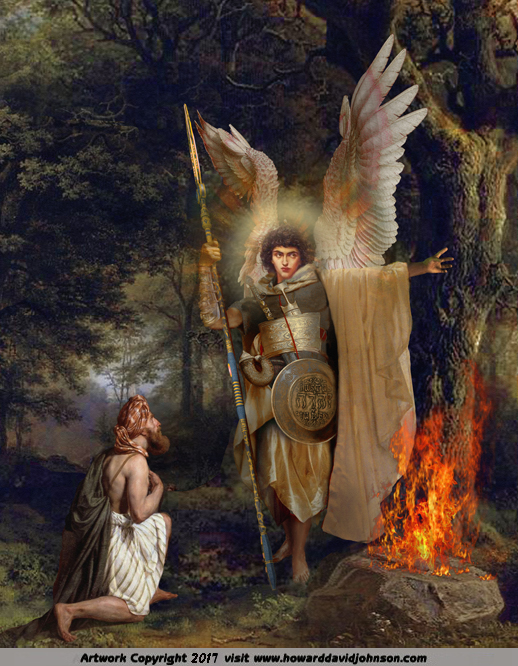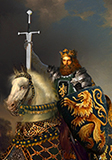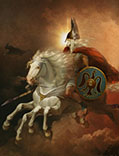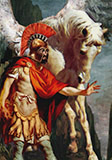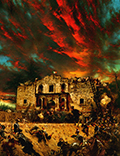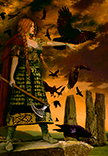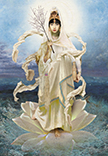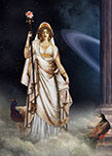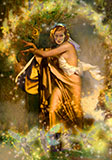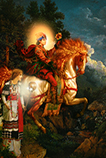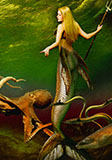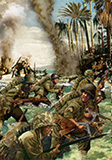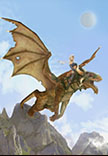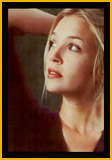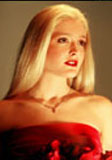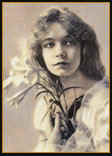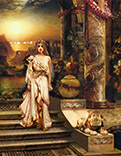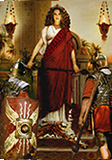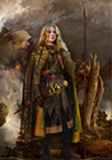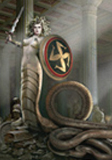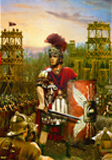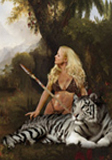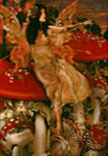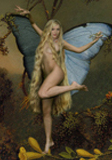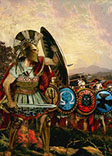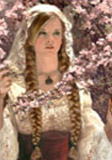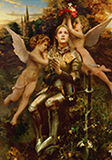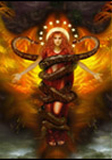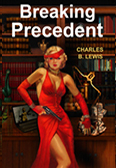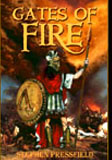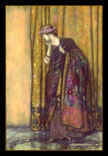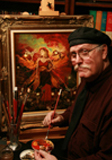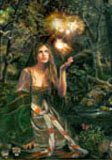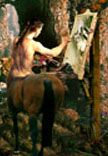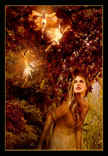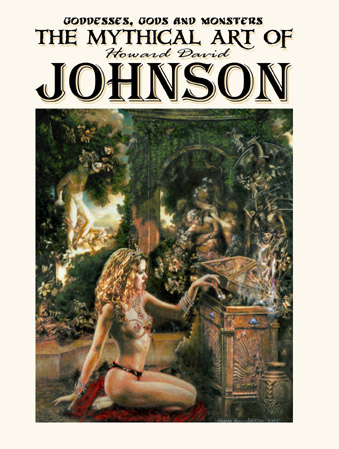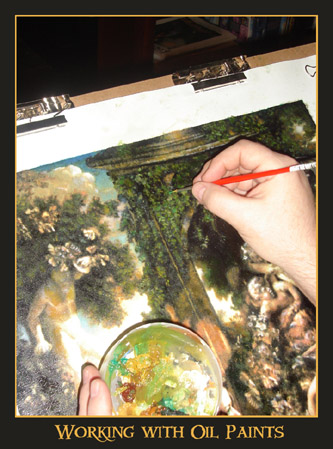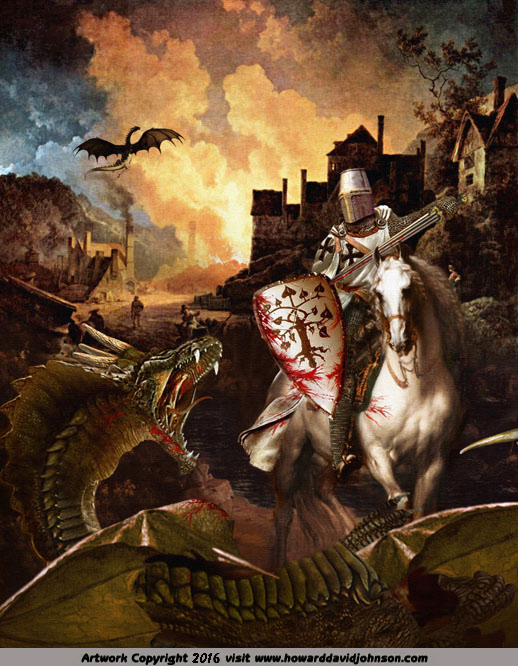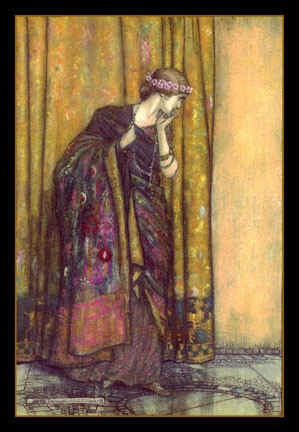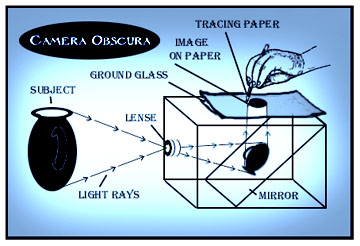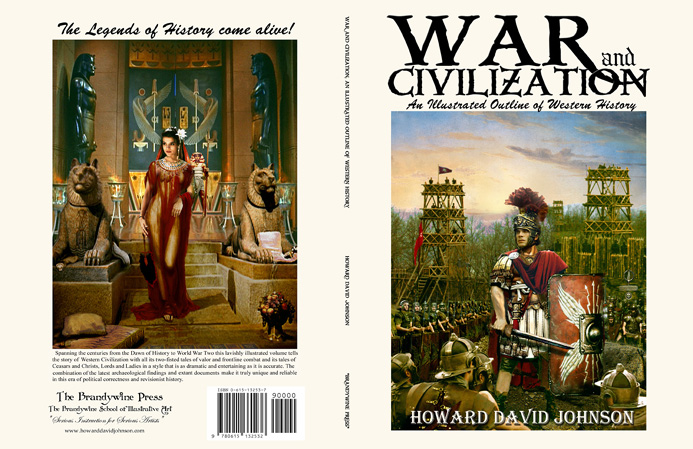|
New
Realistic Paintings of people in Oils and a variety of other Visual Art
Media
|
|
M M X Exhibition: Homage to the Masters of
Realistic Painting
|
What is Realism?
What makes a Painting Realistic?
In most Realistic paintings the artist
attempts to represent persons, scenes, things, and facts as they are,
life as it is. The word realistic is used in many senses- as opposed to
romanticism, to conventionalism, to sentimentalism, to idealism and to
imaginative treatment although it can also combine these themes and
many others. Norman Rockwell's work for
example was dismissed as commonplace and unnecessary in the 20th
century but now shows us a world "Gone with the Wind"... how sad almost
ALL of his wonderful paintings were burned.
Traditional
History Painting...in new media
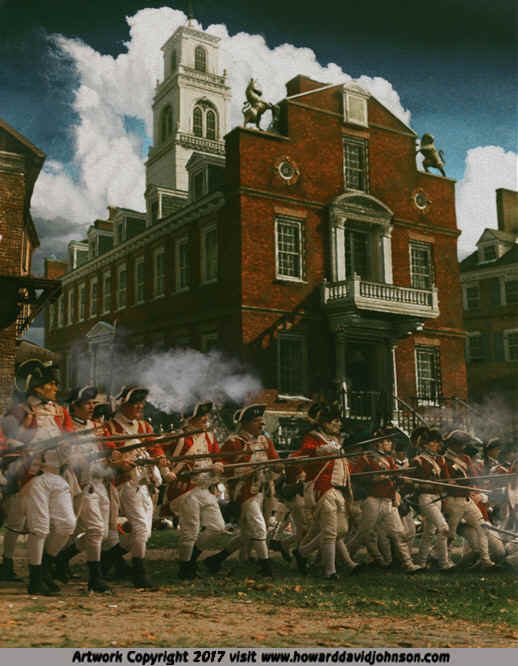 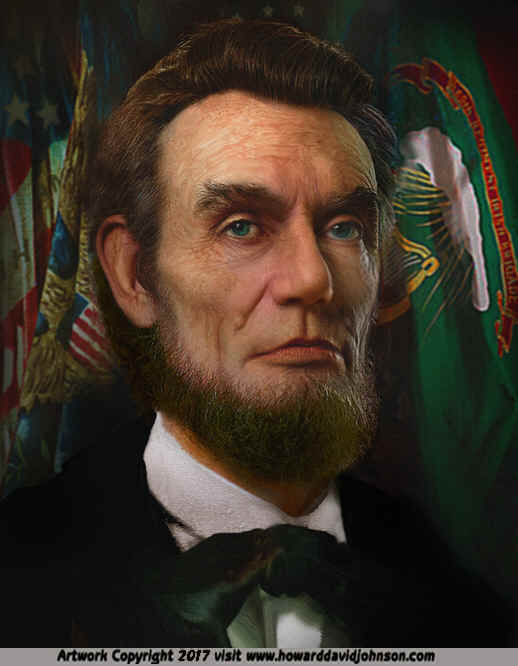
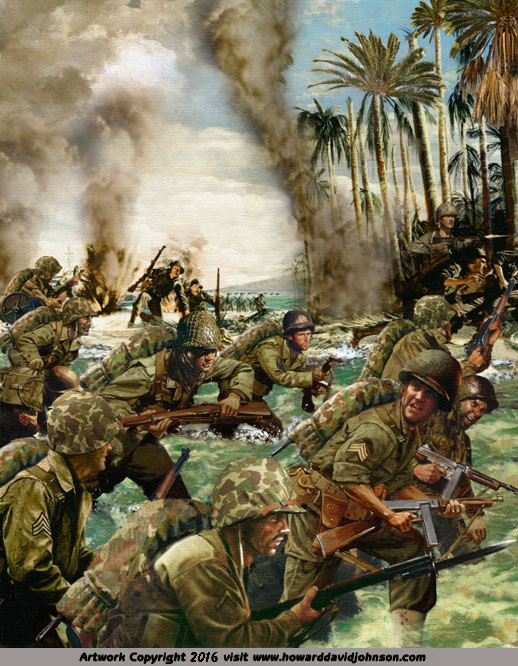
Of all the
different kinds of realistic paintings, none are harder than
illustration, yet illustration is the least respected. Which do you
think would be hardest? To Paint whatever comes easiest to you on a
wave of inspiration like a girl in a chair or a bowl of grapes or a
tree on a hill with every detail, shadow and perspective already laid
out for you or to try and recreate a depiction of say for example, The
World War Two U.S. First Marine Division assaulting Peleliu Beach in
the pacific? Meticulous research is essential. The weapons, uniforms,
troop formations, and the distinctive scenery cannot be faked. Many of
the greatest realistic paintings of history combine fine art with
painstaking research and illustration. In spite of these facts, all
works of illustration have been generally dismissed by elitists as
inferior to even the simplest landscapes and portraits.
Anyone who has actually undertaken such a
complex task knows better.
And then
there is FANTASTIC Realism~
Realistic depictions of unreality as opposed to Realistic depictions of
everyday life.

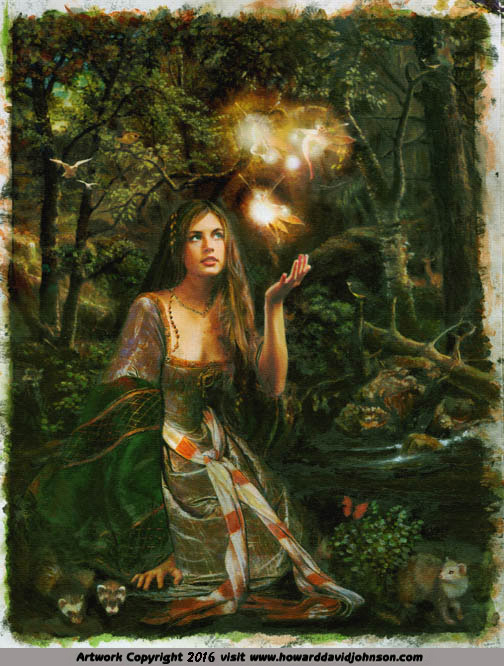
"Faerie
Guardians" MMVI is an oil painting on 20x16 canvas and "Sleeping
Beauty" MMV is another oil painting this time on 11 x 14 Bristol
board.

( Athene, goddess
of Justice and Wisdom is one of David's traditional realistic oil
paintings and is painted on 20 x 16 canvas. )
Sometimes Realism is a
term of praise, and sometimes it can be a term of derision. During the
nineteenth and especially the twentieth century the use of the words
realistic and realism often implied that the details brought out
in realistic paintings were unpleasant, sordid, obscene, or of a
generally offensive character.
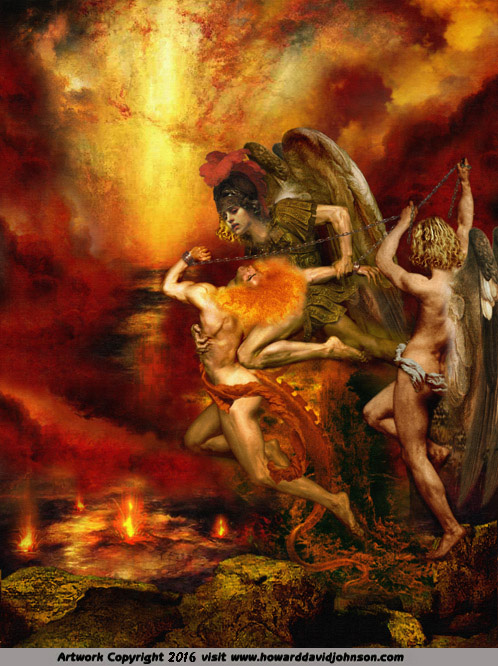
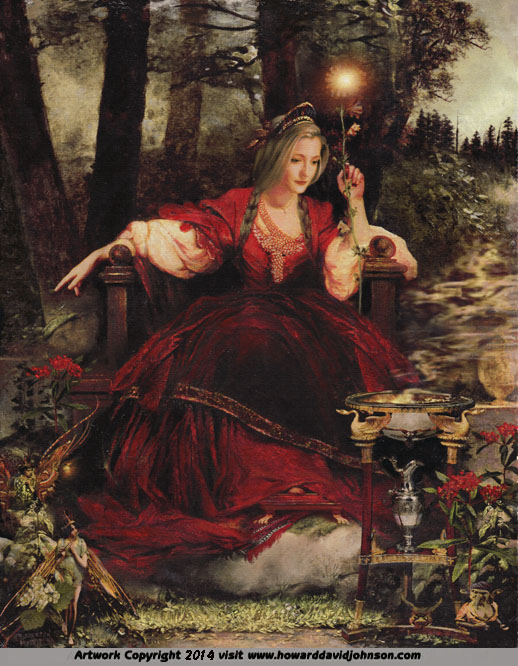
Fantastic
Realism: "Into the Lake of Fire" Left is Digital & Mixed
Media and "Queen Mab, the Bringer of Dreams" MMVI right is Oil on
Canvas.

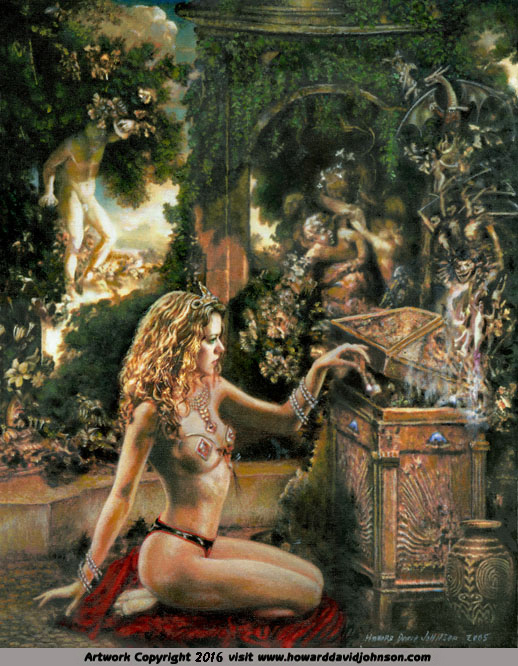
"All Hallows Eve" MMX is an oil painting on 20 x 16 canvas and
"Pandora's Box" MMV is another oil painting on 20 x 16 canvas.
Many 20th century contemporary
realistic painters working in the Photo Realism style were trained in
an educational system openly hostile or dismissive to Classical
realistic painting and art tradition and were only taught the tenets of
Abstraction and Expressionism, such as "Art must be offensive, Art must
be unclear, technical skill is a hindrance," and so on. As a result many contemporary artists
creating realistic paintings are more akin to the abstract and
expressionist schools than to the "Classical Realism" of the ancient
Greeks which adored mathematical design, beauty and nature.
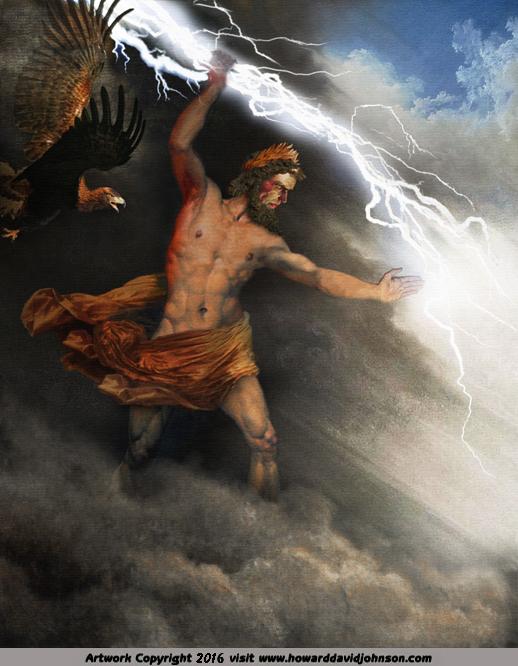 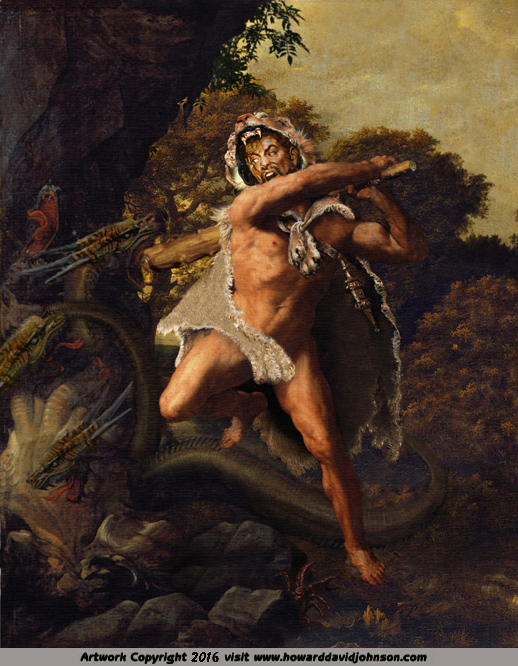
"Zeus, King of the Olympians" (AKA
Jupiter, Depicted with his master thunderbolt) and "Hercules and the
Lernean Hydra" (The second of the 12 labors of Hercules) MMXII [mixed
media]

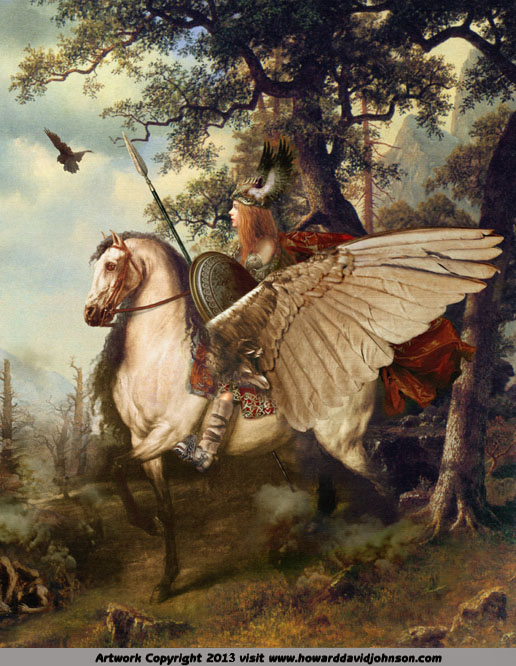
"Atalanta" MMX
on the Boar hunt (left) and "Valkyrie Maiden" MMX approaching a
battlefield.
The realistic painting tradition and long standing schools of that
style of training were cut off for generations in the 20th Century and
much of the knowledge of the old masters was lost. The political
power of the realistic artist was broken and they were no longer an
indispensable member of society. Hostility to creators of
realistic paintings goes back to ancient times and the jealousy of
advisers to the Pharaohs and Kings who were not allotted as much time
with them as their portraitists. For more on history, media, style
& technique of realistic & abstract painting see the essays
& articles section after the exhibit.
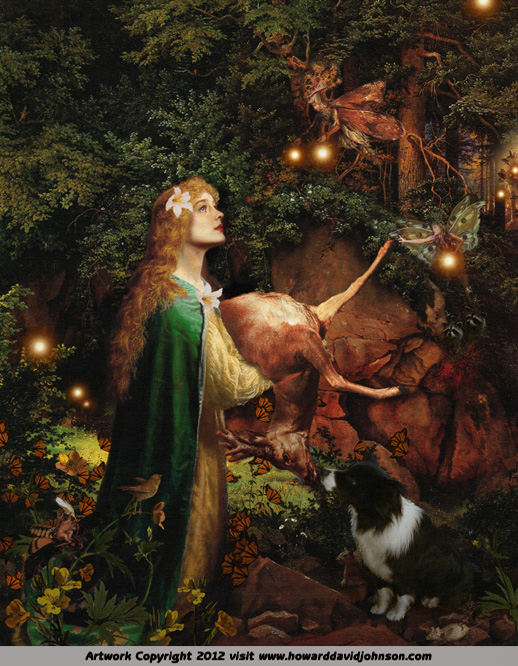
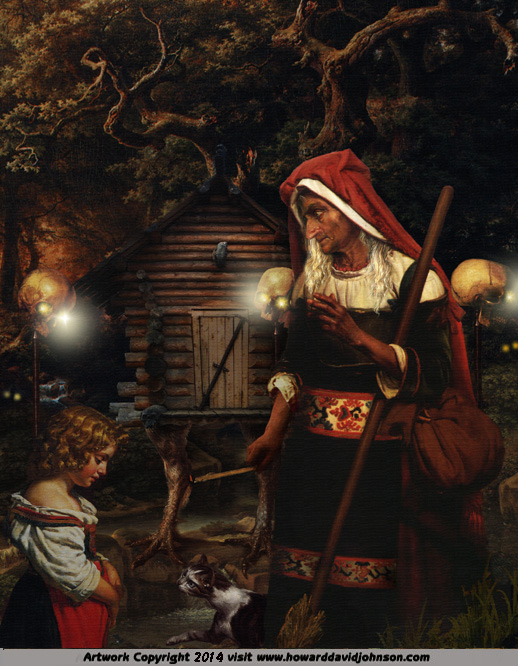
"The Protector of the Forest" MMX from German Fairy Tales and "Baba
Yaga" MMX from Russian Mythology.
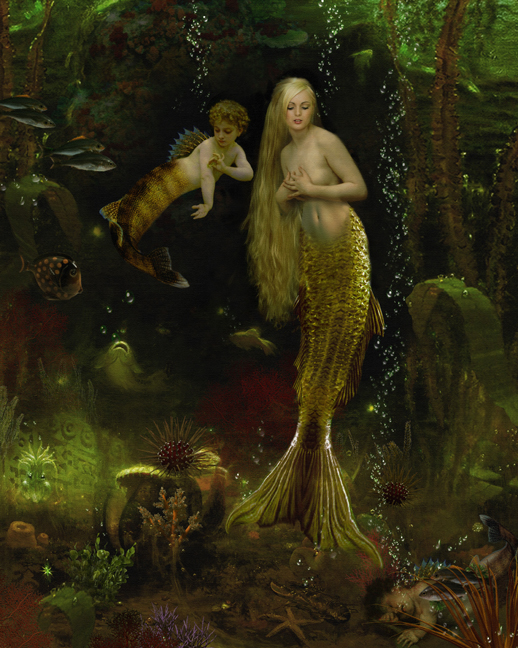
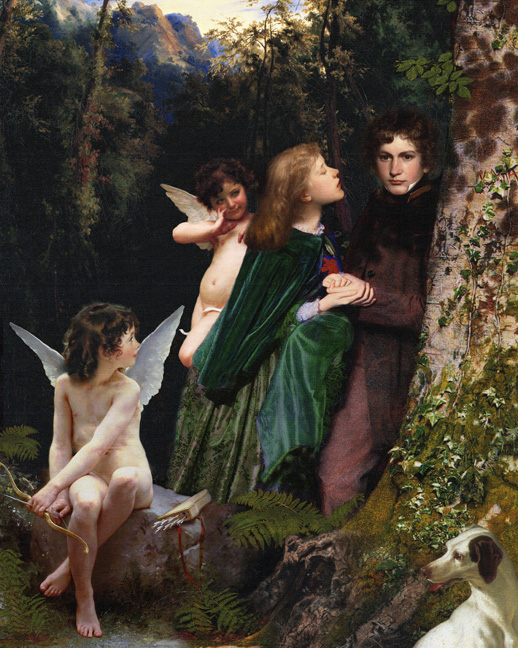
These
next few paintings include Oils on canvas, Prismacolor paintings and
Digital illustrations incorporating mixed media...

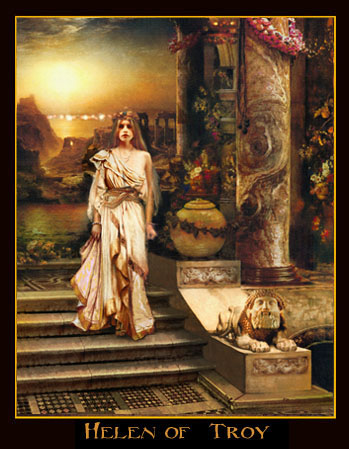

 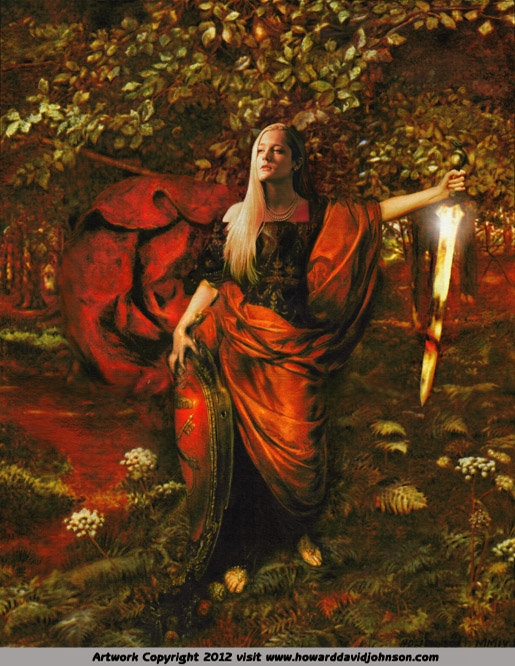
Contemporary
Realism does not embrace the mathematics and compositional design of
the Classical school of realistic painting (like the golden ratio) but
does not frown on beauty. Photo Realism usually strives to look as much
like a photograph as possible and sometimes the results are
deliberately shocking or disturbing. Photo-Realistic paintings can be
brilliant and insightful or can actually be quite mundane and so
ordinary as to be boring just like ant other style of art.
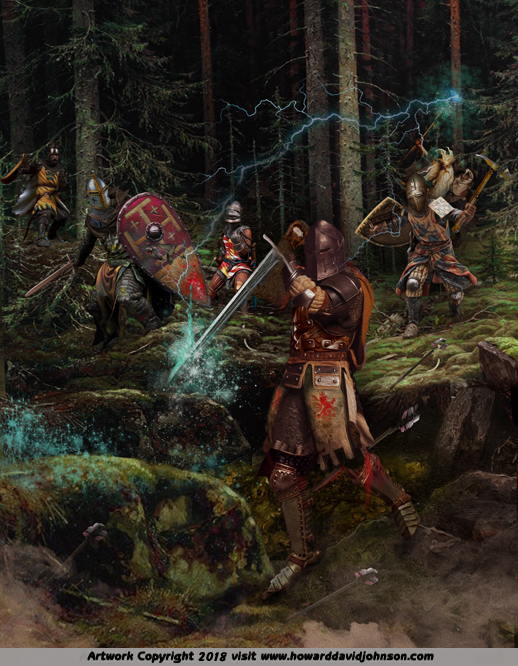
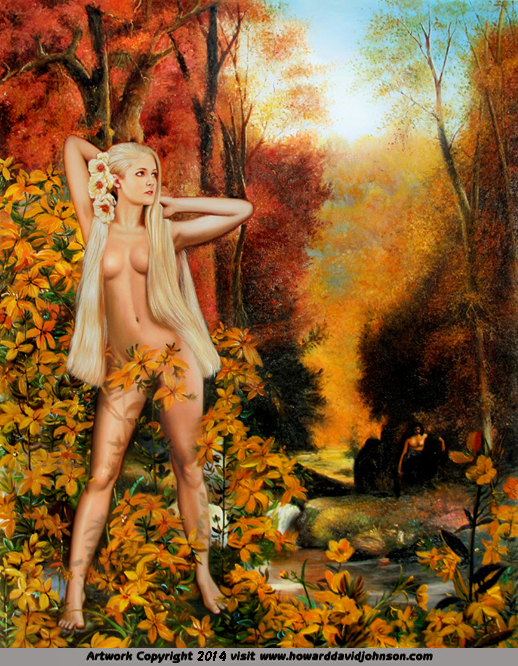 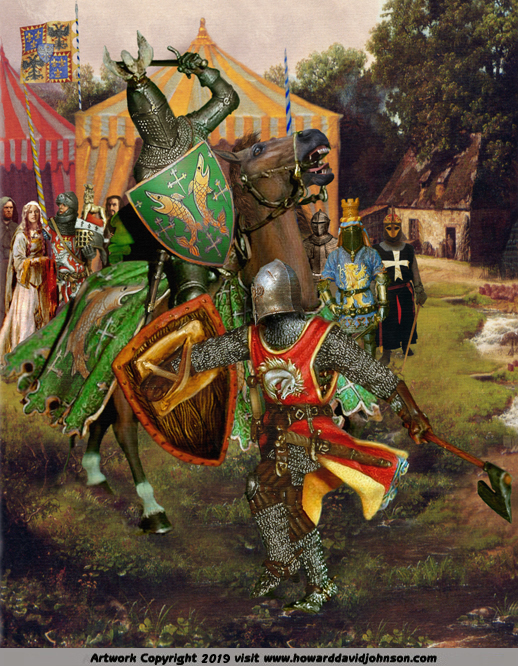
The real mission of Photo realism is
not to record everyday life like in Norman Rockwell's realistic
paintings, but to expose the unconscious way we look at & accept
photographs. The
creators of photo-realistic paintings often deliberately decline to
select subjects from the natural, beautiful, & harmonious &
more especially, depict ugly things & bring out details of an
unsavory sort for social commentary & political purposes.
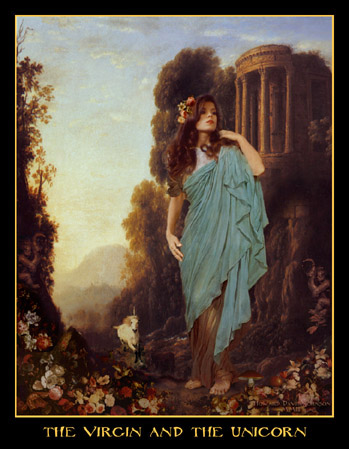 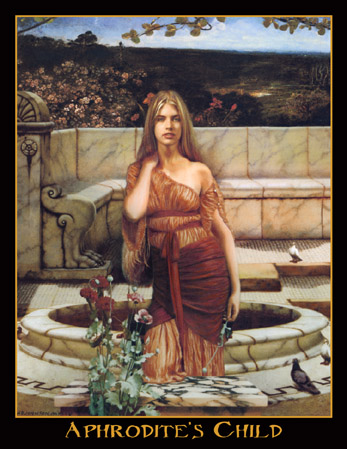
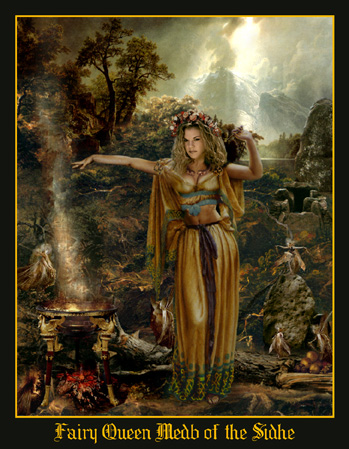
By the 20th century realism had spread to
nearly all nations- then realistic painting elements combined with
those of Impressionism, Symbolism, & other movements. After
decades of repression during the abstract school's stranglehold on the
learning institutions and media came the internet and the Realistic
Revolt in the early 21st century. The Modern Day Realistic Painter
refused to die! The 21st century has seen an explosion of creativity
and expression as a new wave of brilliant realistic painters have
emerged exploring all these different styles and media with power,
eloquence and passion.
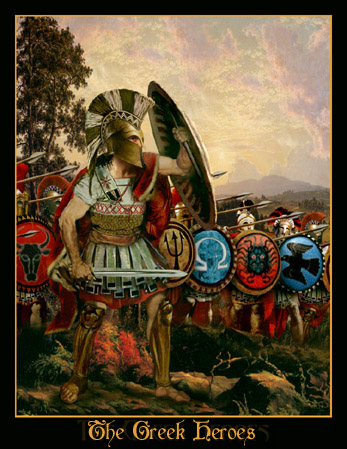
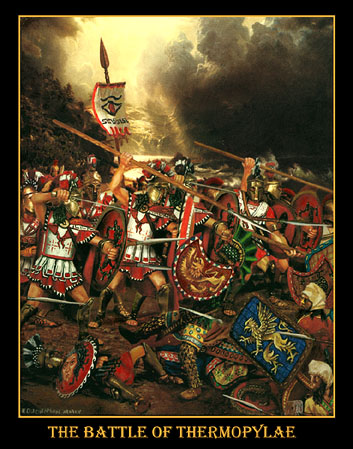
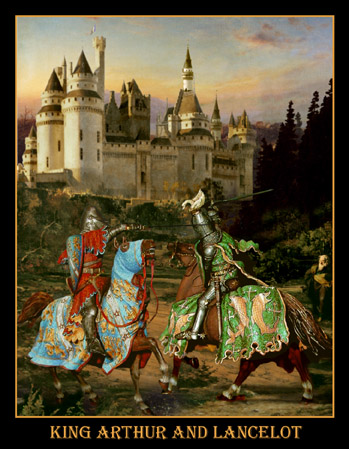
Fantastic Realism is a versatile style of
realistic painting in that it can combine with or be a part of the
Classical, Contemporary or Photo-realistic schools or stand as a style
unique unto itself. This exhibit combines elements from all of these
schools of Realistic painting and embraces the natural, the romantic,
the fantastic and sentimentality just as much as other gifted
contemporary realistic artists passionately avoid those themes,
striving for absolute and unvarnished reality.
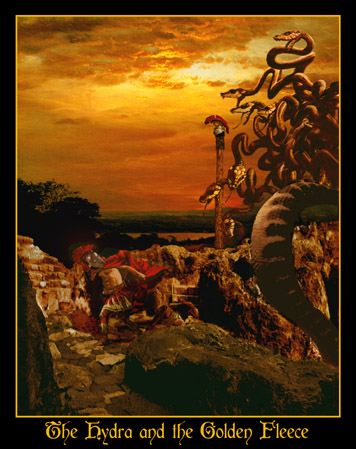 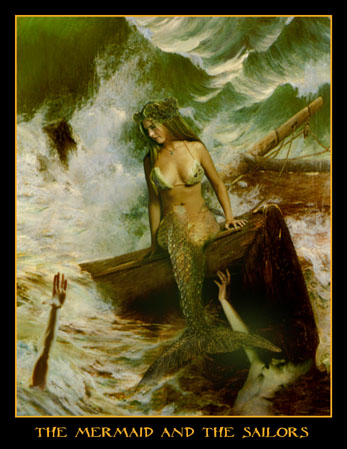
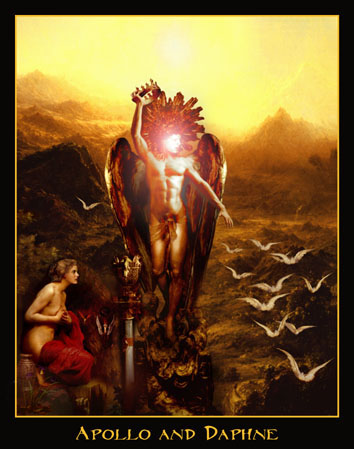
Fantastic
realistic paintings as a genre are born of these movements & tied
to them in style and technique, but prefer to explore subjects that are
strange or strikingly unusual rather than scenes of everyday life or
objects. They are often bizarre in form, conception & appearance
& even wondrous in their beauty. Sometimes macabre & grotesque,
they are rarely boring like the other forms of Realism in visual art so
often are. Fantastic Realism can be completely apart from everyday
reality, yet appear to be quite real like these fantastic but realistic
illustrations from The Holy Bible.
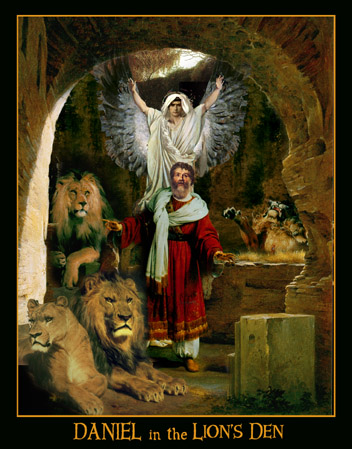 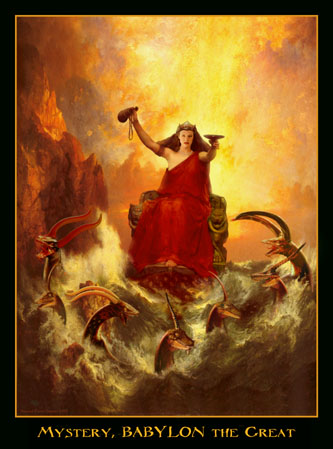
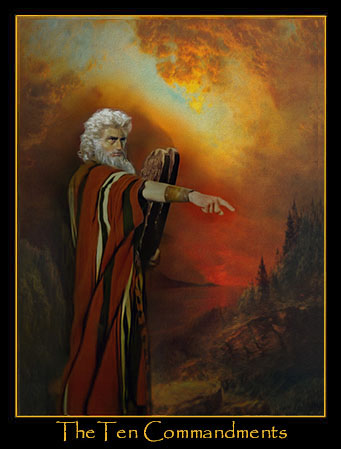
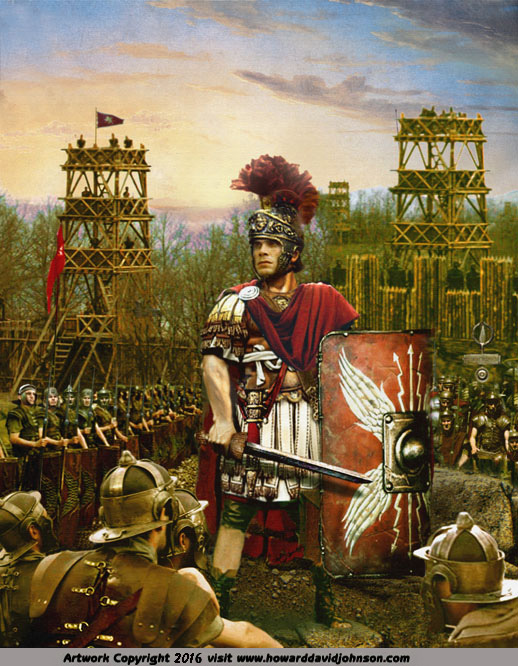 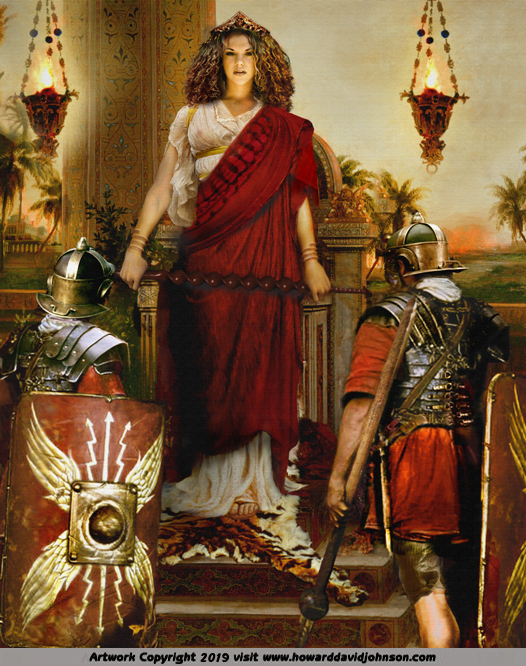
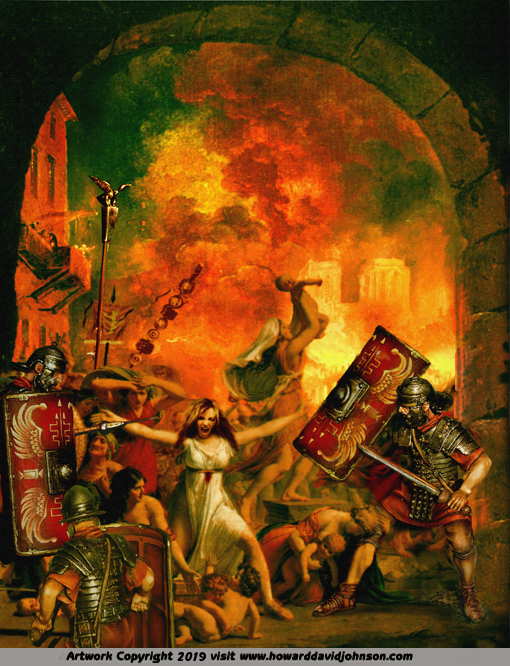
Snobbism
in the arts is nothing new. Some people will tell you that oils are the
only valid medium for realistic paintings. These next two are
'Prismacolor Paintings', if you will: This art medium, these relatively
new soft oil based colored pencils are not the first Dry Painting
Medium: the term 'Pastel Paintings' originated in the 17th century.
They also are a wet medium, mixing well with a variety of solvents and
applied with an artist's brush - getting very oil painting- like
results. This kind
of picture is really not at all what people think of when they hear the
word 'drawing'.
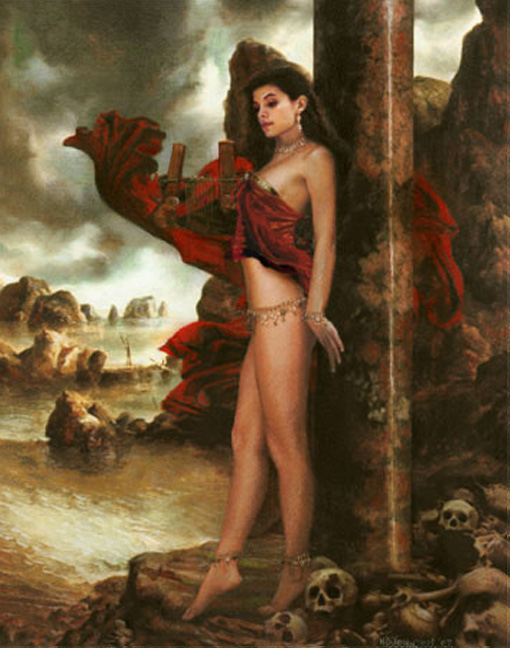
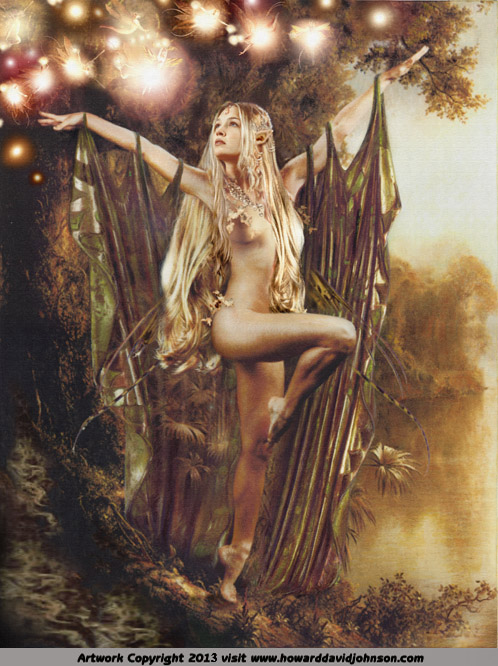
"Circe
Invidosia" and "Elven Fairy Magic" are Prismacolor paintings done on #
500 13 x 16 inch Strathmore Bristol board.
In recent years
digital has become a preferred media in the publishing industry for
several reasons. First of all, there’s the speed and the freedom
from fear. The undo button is empowering and liberating. More
importantly, publishing
customers rarely can afford to pay for old-fashioned traditional
methods like oil on canvas. Artists can still do them, and do them
well, but no one but millionaire art collectors can afford to pay even
poverty level hourly rates for all that time. The masters often
took a year or more for a single painting. Speaking of hourly rates;
pre-digital revisions were financially catastrophic, but now adding
more space to the canvas does not require starting over, no wonder the
starving artist became a stereotype! With digital media artists can
create pieces that look very nice for very nice prices and with blazing
speed . The publishing industry has never been noted for its patience.
In the days before the digital revolution, mailing traditional media
originals was scary at best, but now they can be scanned and shipped or
even uploaded without risk in minutes.

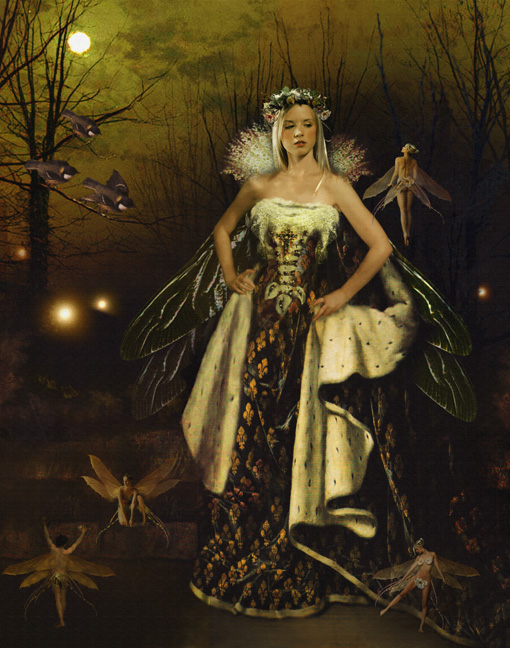
"Return
with your shield or on it" MMX (left) and "Faerie Tales" MMVIII (right)
are digital illustrations incorporating mixed media
With
a background in traditional media including oils, pastels and colored
pencils, Howard David Johnson embraces leading edge digital media in
the creation of his depictions of fantasy, folklore, mythology, legend,
religion, and heroic history. He works in and mixes a wide
variety of media * Oil paintings * Acrylic Paintings * Prismacolor
Paintings * Drawings * Chalk & Oil Pastel Paintings * Photography *
and most recently Digital Artistry & Mixed Media *






Who is Artist
and
Illustrator Howard David Johnson?
In one of David's invitations
to the Florence Biennale Contemporary Art Exhibition, (a partner in the
United Nations' Dialog among Nations), UN Secretary General Kofi Anon
wrote him: "Artists have a special role to play in the global struggle
for peace. At their best, artists speak not only to people; they speak
for them. Art is a weapon against ignorance and hatred and an agent of
public awareness... Art opens new doors for learning, understanding,
and peace among nations."
|
Howard David
Johnson is a realistic visual artist & photographer with a
background in the natural sciences & history. He works in a wide
variety of mixed media ranging from oil paintings on canvas to digital
media. After a lifetime of drawing and painting, His Traditional
Realistic Art was exhibited in the British Museum in London in 1996, (3
years before he got his first computer) as well as numerous American
ones since, such as the Metropolitan Museum of Art. His realistic
paintings have made appearances in every major bookstore & game
shop chain in America as well as magazines & educational texts
around the world.
Some of his more prestigious
clients include the National Geographic Society, the University of
Texas, the University of Cambridge in England, Paramount Studios,
Universal Studios, PBS TV, Enslow Educational Publishers, Adobe
Photoshop, Auto FX, Doubleday, the History Book of the Month
Club, & J Walter Thompson Advertising, just to name a few. As a realistic
illustrator he has not only used the computer to create new forms of
realistic paintings, but has worked in the development and marketing of
software for Adobe Photoshop. Digital art, Colored pencils, Pastels,
Mixed media, and original Oil Paintings can also be commissioned for
select projects. Some originals are for sale as well. Licenses to print his realistic
paintings are available starting
at only $99 USD.
|
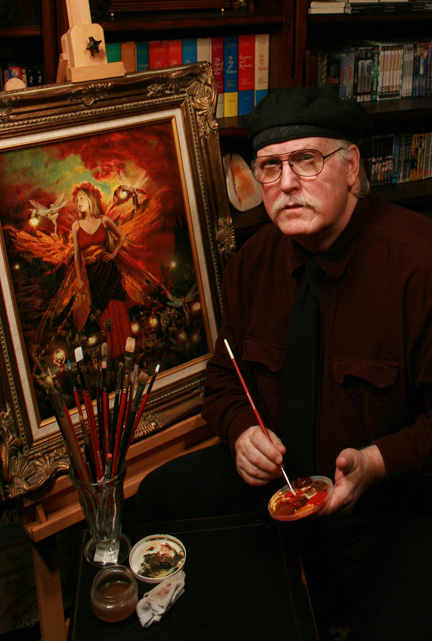
A portrait of the
artist in his painting studio as he is today in a photo taken by his
youngest son Erich.
|
|
Snobbism in the arts is nothing new.
Some people will tell you that oils are the only valid medium
for realistic paintings. That Acrylics, Pastels, Watercolors,
Colored Pencils, Digital, and other Media for Realistic Paintings and
Drawings are not valid for "real" art. For more on this centuries
old prejudice see the essay section below...






Thank You For Visiting
Howard David Johnson's Gallery of Realistic Paintings...
All these
realistic paintings, pictures, & text are copyrighted &
were registered with the Library of Congress by the author, Howard
David Johnson All rights reserved worldwide
|
|
This
Art Gallery has been honored by more than
35,000,000 Unique Visitors
from
the Four Corners of
the Earth:
My Friends from around
the world thus far :
|
| England, Canada,
Scotland, Wales, Ireland,
Germany, France,
Monaco, Andorra, Italy, The Vatican
City State,
Greece, Macedonia, Cyprus, Turkey,
Belgium, Denmark,
The Faroe Islands, Greenland, Yugoslavia,
Macedonia, Croatia,
The Czech Republic, Bosnia, Herzegovina,
Slovakia,
Slovenia, Luxembourg, Latvia, Estonia, Hungary,
Bulgaria,
Lithuania, Poland, Austria, Romania,
Spain, The Russian Federation,
Ukraine, Kazakhstan, Moldova,
Malta, Iceland, Finland, Norway,
Netherlands,
Switzerland, Liechtenstein, Sweden, Portugal,
Albania, Armenia, Georgia,
Azerbaijan, Belarus, Kazakhstan, Gibraltar,
Israel,
Palestinian Territories, Egypt, Libya,
Mali, Algeria,
Niger, Saudi Arabia, Oman, The United Arab
Emirates, Kuwait,
Bahrain, Qatar, Yemen, Iraq, Iran,
Jordan, Syria,
Lebanon, Morocco, Ethiopia,
Eritrea, Liberia,
The Republic of Congo, Rwanda, Kenya,
Angola, Ghana, The Ivory Coast,
Zambia, Zimbabwe, Sudan,
Nigeria, Namibia, Uganda, Kenya,
Eritrea,
Tanzania, Botswana, Malawi, Senegal, Djibouti,
Cameroon,
Chad, Gambia, Mozambique, Swaziland,
Lesotho, South Africa,
Seychelles, Viet Nam, Japan, South Korea,
China, Hong Kong, Macau, Mongolia,
Mauritius, Singapore, Thailand, Cambodia, Laos,
Myanmar, Macau, Malaysia, |
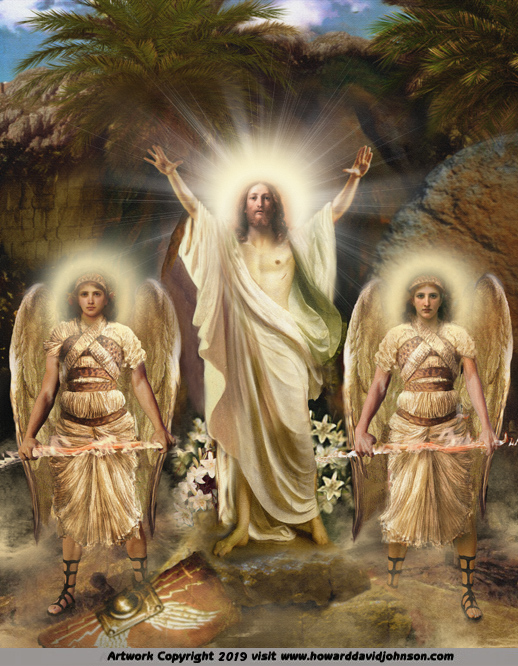
"The Resurrection of
Christ" MMX Mixed Media
|
| Taiwan,
Nuie, New Zealand, Fiji,
Cook Islands, New Caledonia, Vanuatu, American
Samoa, Australia,
Micronesia, Polynesia, Papua New Guinea, The Heard
and McDonald Islands,
The Philippines, Guam, Palau, Cocos Island, The Kingdom of
Tonga,
Malaysia, Brunei Darussalem, India,
Pakistan, Afghanistan, Bhutan,
Bangladesh, Sri Lanka, Chagos Islands, The Republic
of Maldives,
Turkmenistan, Kyrgyzstan, Uzbekistan,
Tadjikistan, Nepal, Indonesia,
Chile, Argentina, Uruguay, Paraguay,
Brazil, Peru,
Aruba, Venezuela, Bolivia, Suriname, Guyana,
Aruba,
The Dominican Republic, Guatemala, Costa Rica,
Colombia, Trinidad and Tobago, Antigua and
Barbuda, Barbados,
The Virgin Islands, Saint Lucia, The Netherlands
Antilles, Panama, Saint Vincent & Grenadines, Grenada,
Ecuador,
Belize, Nicaragua, El Salvador,
Bermuda, Cuba,
Jamaica, Dominica, Haiti, Puerto Rico, Cayman
Islands, Anguilla, The
Bahamas, Honduras,
Mexico,
Madagascar, Central African Republic, Gabon,
San Marino, Saint Kitts & Nevis Anguilla,
Azerbaidjan, Burkina Faso, Equatorial
Guinea, Mauritania, Burundi,
and my home, The
Great Free State of Idaho (USA)...
If
your home is not listed here please
e-mail and tell us where you're from...
info@howarddavidjohnson.com
We love
hearing from you! Your business, letters & links are
always welcome. E-mail for courteous service...
*****
|
|
Enter a world
of Beauty and Imagination...

INDEX of GALLERIES ~ LINKS
to LARGER ART
The Realistic and Fantastic Art Galleries of Contemporary
American Illustrator Howard David Johnson
Click on
these Fun Educational
Realistic Art Gallery link icons for Two-fisted Tales of VALOR
&
Frontline Combat featuring Legendary Warriors of History, Knights and
ladies of
Arthurian Legend, Celtic, Nordic, Asian and Olympian gods &
monsters,
unicorns, dragons, fairies... and more!

Original oil paintings are for sale, e-mail for info...
or visit these pages for details
info@howarddavidjohnson.com
Thank you for Visiting... We love hearing from you! Your business, letters, &
links are always welcome.
*****
Keep scrolling down for Essays and articles on Realistic Art yesterday and today
by the artist
|
|
|
|
|
|
ORIGINAL OIL PAINTINGS ON CANVAS ARE AVAILABLE FOR SALE:
Many of Johnson's Digital Mixed
Media creations displayed in this site are available to be rendered in
oil on canvas once like the 20x16 oil on canvas Faerie Guardians 2006
(above right). Each design will only be rendered in oil once at this
size and can be delivered in as little as 90 days.
Sadly, much of the subtlety, vibrance, lustre and
impact of an original oil
painting is lost when it is scanned and imported to digital media or
even
printed by a master printer. Nothing can compare to an original oil
painting
viewed in person in my opinion but the other painting media like
digital (above
left) look VERY good in print and have
their charms and distinct advantages as well.
You can e-mail for more details about availability at:
info@howarddavidjohnson.com
 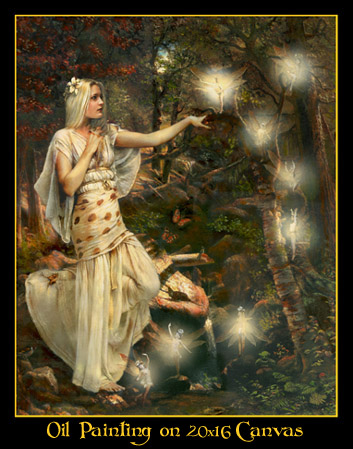 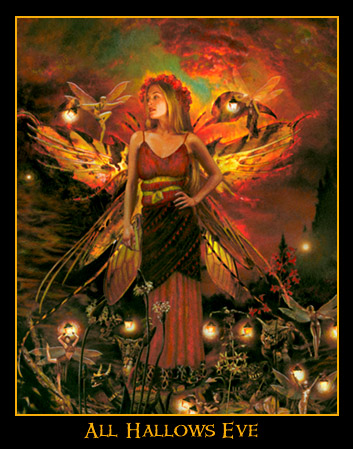
Almost all of Johnson's Mixed
Media creations (above left) are available to be rendered in oil on
canvas once like the 20x16 oil on canvas Faerie Guardians (above
right). Each design will only be rendered in oil once at this size and
can be delivered in as little as 90 days.
Sadly, much of the subtlety, vibrance, lustre and impact of an original
oil
painting is lost when it is scanned and imported to digital media or
even
printed by a master printer. Nothing can compare to an original oil
painting
viewed in person in my opinion but the other painting media definitely
look good in print and have
their charms and distinct advantages. People have written asking me to
tell them
how to tell mixed media from prismacolors or oil. The very fact it is
so hard to
tell is my point! This new media looks very presentable and costs far
less! ALL
HALLOWS EVE was begun as a digital montage This is your guide: above
far right
is the digital composition...The question is, are you willing to pay
tens of
thousands to be old fashioned if only an art expert can tell the
difference?
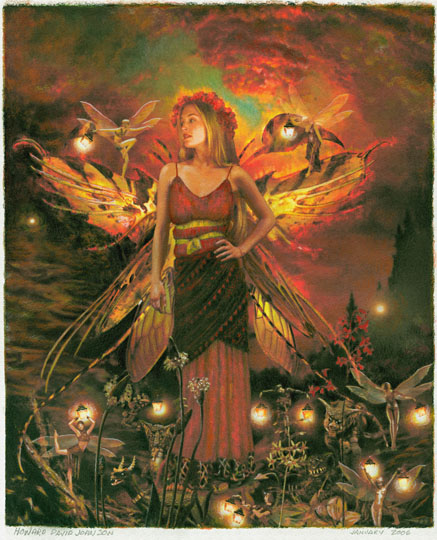 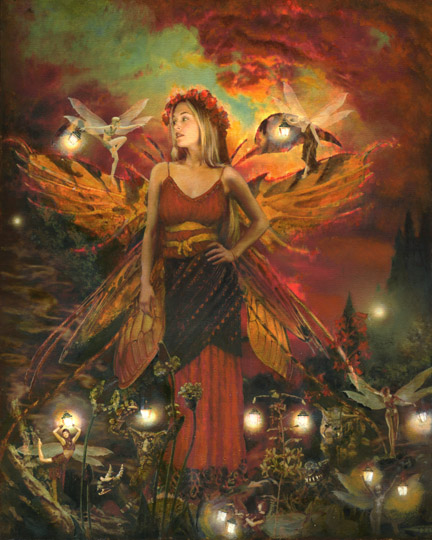
New for 2010! ALL HALLOWS EVE rendered
in oil on 20x16 canvas (right) features the lovely Ann Bratton as
Titania in this illustration from Shakespeare's Midsummer Night's
Dream. Even when displayed at the same size the oil on canvas is
clearly a superior illustration to the 2006 Prismacolor Painting on
paper. (left). Considering many oil painters charge $60,000.00 USD and
up it seems my $2,000.00 USD and up prices are very low...
Original
oil paintings are for sale, all new
designs or based on existing digital comps- e-mail for info.






info@howarddavidjohnson.com
Thank you for Visiting... Your
business, letters, & links are always welcome.
*****
|
|
|
LIMITED
EDITION
[of
a maximum 1,000 prints per image]
PRINT-ON-DEMAND
Each
inspected, hand signed and numbered by the artist!
Gorgeous
Quality Printing!
For a LIMITED
time and a LIMITED print run most of the
illustrations in Johnson's vast portfolio are now available!
Free Shipping and
Handling on all orders!
A numbered
certificate of authenticity is included.
CHECK
OUT WITH

thejohnsongalleries@gmail.com
Sized
to fit standard frames!
20x16 inches [508x406mm] & 14x11 inches
[356x280 mm]
|
Poster
Size Art Prints!
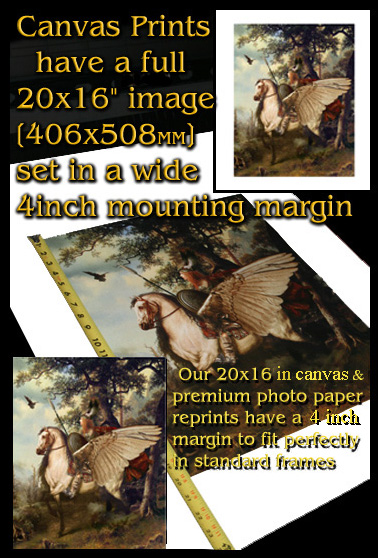
The Johnson
Galleries now prints these "in-house" with our new state of the art
Epson 7890 oversize printer on Epson 200 year premium
photo paper and canvas with Epson inks!
|
|
|
Art and Technology: From the
Camera to the Computer
A brief
overview of the shifting cultural attitudes toward Realistic Art in the
last 150 years
~Essay #8
by Howard David Johnson
The first decade of the 21st Century has
seen a grass-roots counter-revolution in the art world which has
overthrown the stranglehold elitist proponents of Abstract
expressionism gained on academia, the media and the art world at large
in the early 20th Century.
Realistic Art was declared obsolete and irrelevant at the
beginning of the 20th Century due to the easy chronicling of
persons, places, and events by the Camera - in spite of this new
technology empowering the greatest era in Realistic Art history. The
“Modern Day Artist” refused to die and began to explore realms of the
heart and mind the camera could not record. The proponents of Abstract
Expressionism gained control of elite art collector’s markets followed
by academic institutions and the media leading to the abandonment of
centuries of classical teaching methods and traditions in our
universities. Even the best realistic art was later denounced and
ridiculed as the dismissive and often even hostile Art establishment
created elitist scorn for Realistic Art in general. This created a
disconnect with the general population who could not relate to the
tenets of Abstract Expressionism. The advent of the internet broke the
absolute domination of the opinions of the Abstract School on media and
academia and opened the floodgates of artistic expression and free
opinions. Free at last from institutionalized condemnation, more and
more artists began to choose realistic treatments and a tidal wave of
fabulous new realistic art has been created in every conceivable visual
art media for museums, galleries, books, movies, and video games.
As the camera became commercially available in the early 19th
Century it became clear that the visual artist was no longer an
indispensable member of society. Just about anyone could point and
shoot this device at persons, places, and things and get very fast and
very realistic results. Resentment from thousands of years of artists’
social and political influence fueled the notion that visual artists
should be declared obsolete. The adoption of the camera as an artist’s
tool and the advent of an era of glorious and unprecedented realism in
painting did not stop the movement to crush the political and social
influence of the artist.
Great realistic artists like Pablo Picasso and others like Vincent Van
Gogh courageously answered this challenge by exploring concepts that
could not be photographed with brilliant and visionary works. It was
from these honest and ingenious notions that the schools and
sub-schools of Abstract Art developed. The freshness and innovation of
this movement took the art world and academia by storm. The excitement
of defining the tenets and the delight of bewildering the masses gave
rise to an elite class of critics who could control the lucrative art
collector’s market with obfuscation and intellectual snobbery.
This wealthy art collector’s market gave credence to Abstract
Expressionism’s “high art” status and the advice of well placed critics
became extremely valuable and they formed an alliance with like-minded
academics. As time passed, this trendy movement whose concepts were so
hard to argue with gained control of the establishment and elitism took
root. It was not long before traditional painting methods were not
taught in universities any more as realistic art was no longer
considered “Real Art” and tenets like; “Art must be ugly”, Art must be
new” Art must be obscure”, and “The best Art is offensive” took hold in
schools and printed media.
Not satisfied with control over the
most lucrative galleries, collector’s markets and academia, these
elitists moved from dismissive to openly hostile attitudes toward those
who still loved and created realistic art. The merciless and unprovoked
rebukes of great realistic artists like Norman Rockwell, N.C. Wyeth and
so many others are well documented in 20th century
histories. That’s not “Real Art” and why do you waste your talent on
“Mere Illustration” were some of the nicer comments. Illustrators in
the 20th century wore these rebukes like badges of honor,
like black eyes gained from standing up to schoolyard bullies, knowing
in their hearts what they were doing was worthwhile and the narrow
minded views of their critics were not the only valid opinions. By the
end of the 20th century, the long apprenticeship tradition
was broken and classical realistic art methods were lost forever. The
Shock Art movement in the 1990’s carried the tenets to new extremes as
“ART” became a dirty word. U.S. Government Endowments for the Arts were
discontinued. Abstract Art had become the norm with its obfuscated
themes and was then itself considered irrelevant and academically
worthless. Art programs were then removed from countless public school
curriculums to make time for standardized test preparation. There is no way that mandating more
math, requiring more reading, or scheduling more science will replace
what we have lost as a culture.
At the turn of the 21st Century the Abstract Expressionists
had been in control for generations with a thought control blockade in
books, newspapers, radio, television and schools. Anyone who disagreed
with them was told they were too stupid to understand “Real Art” and
theirs was the only voice to be heard. What had begun so beautifully
and sincerely was hijacked and violated until it became a byword for
vulgarity. Then came the internet and the realistic artists, long
silenced began to express their views. It was like the boy who cried: “The
Emperor has no clothes!” This revelation spread like wildfire
through the cultural consciousness. Suddenly, it was no
longer a disgrace to hold something other than those narrow views.
Galleries on the internet showcased generations of repressed artists
realistic works in a tidal wave art history calls: “the Realistic
Revolt”. Of course, Abstract Art still flourishes today especially on
college campuses, but the narrow views of its most fanatical proponents
are no longer cruelly dominant.
The Realistic Revolt has brought the return of respectability to
illustration and realistic landscape and portraiture. When I see the
works of today’s vast multitude of realistic artists coming from a
thousand different directions at once, tears come to my eyes, for I
have worn the title “illustrator” as a badge of honor for decades and
am deeply moved to have lived to see new developments in art and
technology drive the visual arts to levels of quality beyond my wildest
dreams. I predict 3D and digital media will grow more and more
realistic until photos seem noticeably inferior. The internet has not
only opened the floodgates for artistic expression, but employment and
untold artists are earning a living shattering the “Starving Artist”
stereotype so engrained in our cultural consciousness. The beginning of
the 20th century saw technology threatening the survival of
the professional artist and the end of it saw the unbridled tenets of
Abstract Expressionism like “Art must be offensive” threatening the
very existence of art as a part of our culture, the modern day artist
has once again refused to die and has embraced technology to create a
rebirth of realism that Art critics, collectors, academics and everyday
folk can all embrace and celebrate in ways I once feared had been lost
to us forever.
~ Howard David Johnson (2012)
|
|
ON REALISTIC ART:
Personal
Opinion Essays on Realistic Art yesterday and today.
"Did
you know the Greek word "Photography" means "Painting with Light"?
Today with the advent of computers it truly lives up to it's name. Due
to developments in Art and Technology combined with a general lack of
public education, I contend that a more complete definition of the word
"painting" is needed than that which is found in common usage."
~
H D Johnson
"Painting, in art, the
action of laying colour on a surface, or the representation of objects
by this means. Considered one of the fine arts" ~Encyclopaedia Britannica.
"Painting. noun. 1.) The act or
employment of laying on colors or paints. 2.) The art of forming
figures or objects in colors on canvas or any other surface, or the art
of representing to the eye by means of figures and colors any object;
the work of an illustrator or painter. 3.) A picture; a likeness or
resemblance in shape or colors. 4.) Colors laid on. 5.) Delineation
that raises a vivid image in the mind; as in word painting.
~ Webster's Unabridged Dictionary of the
English Language
|
|
|
M M X Exhibition: Influence of and Homage to the Masters
|
|
Over
the last 300 years, ideas about female beauty have drastically changed
and this has caused many of the most wonderful paintings of the old
masters to seem 'ugly' to youthful modern audiences. In the days of
Peter Paul Rubens, being forty to sixty pounds over-weight was
considered not only attractive, but was a status symbol. Beauty is in
the eye of the beholder and tastes have clearly changed.
These new realistic
paintings of mine take their inspiration in part from the realistic
paintings of the old masters just as The Lord of the Rings comes from
The Ring of the Nibelung and European folklore, West Side Story came
from Romeo and Juliet, which was in turn inspired by Antony and
Cleopatra.
Our shared cultural
heritage, great works of art, literature, music and drama, cinema, folk
tales and fairy tales are all drawn upon again and again by the
creators of new works. These works in the public domain are both a
catalyst and a wellspring for creativity and innovation. Even though
all my Realistic Paintings are legally new works and protected under
copyright law their inspiration sometimes comes in part from works in
the public domain. The public domain is a space where intellectual
property protection ( copyright ) does not apply.
|
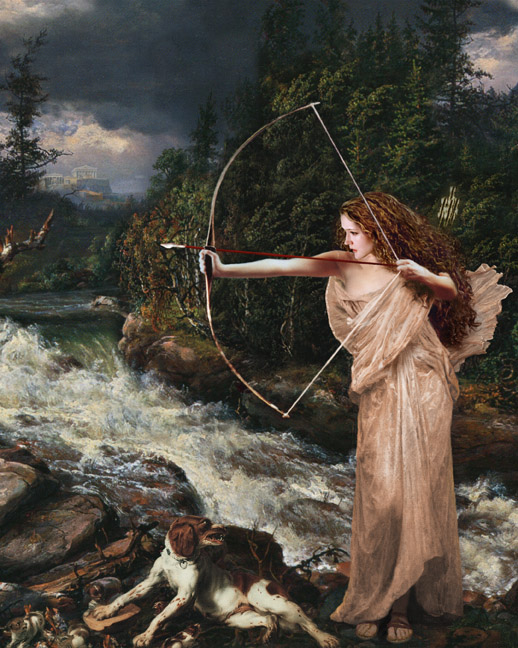
|
|
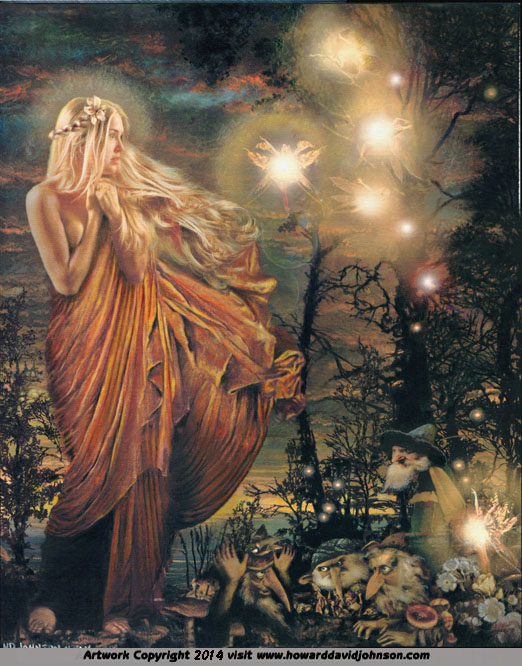
|
When
copyrights and patents expire, innovations and creative works fall into
the public domain. They may then be used by anyone without permission
and without the payment of a licensing fee. My sources have been
transformed so much in the creation of these new works of art that they
would not violate an existing copyright even if they were so protected.
Publicly owned national parks are also considered by many to be public
domain lands. Because of the recent extensions of the terms of both
copyrights and patents, and the privatization of lands and other
resources owned by the Federal Government, little is now entering the
public domain. Look for new litigation and another time extension when
Disney Corporation's Mickey Mouse copyright is due to expire in 2023.
Since the public
domain is a treasure trove of information and resources to be used by
future generations, many advocates are deeply concerned that its
stagnation will make it more and more difficult for future generations
to find creative inspiration. Where would Walt Disney be without the
Brothers Grimm, Hans Christian Anderson, Victor Hugo and so many
others? Where would Aaron Copeland have been without American folk
music? Thomas Nast's Santa Claus without traditional images of Father
Christmas? Picasso without African art?
|
|
These are
artists who made names for themselves and even fortunes through Public
Domain appropriation, one and all. Beethoven did "variations on a
theme" with the works of Mozart for the same reasons I have done mine
with Waterhouse and others- to learn and give homage to the artists who
most inspired me.
Art tradition and
etiquette suggest the most influential should be mentioned at exhibits;
these original new pieces shown in this exhibit take their inspiration
in part from the paintings of Waterhouse, Alma-Tadema, Church, Moreau,
Bouguereau, Leighton, Ingres, Moore, Parrish, Rackham and others. Most
of my sources are changed so much they are impossible to detect, but
sometimes I make it obvious to pay homage.
None of my works has
ever so closely resembled its inspirational paintings so much as "Helen
of Troy" (below): a deliberately obvious tribute to my most
beloved master- John William Waterhouse; and is patterned after his
"Miriamne leaving the judgment seat of Herod" I chose this one for my
tribute because it is so often overlooked. The interior chamber with
it's domed ceiling, King Herod on his throne, the eight man judiciary
council of the San Hedrin, the chains and handcuffs, the tablets of the
law and many other details are missing and in their places many
new things are added.
|

|
|
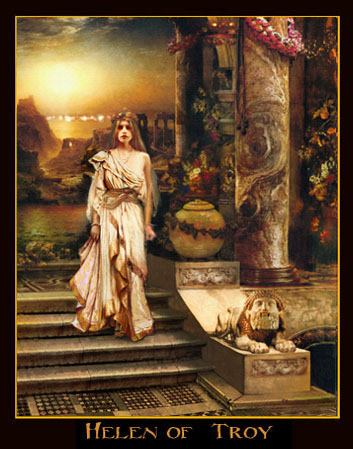
|
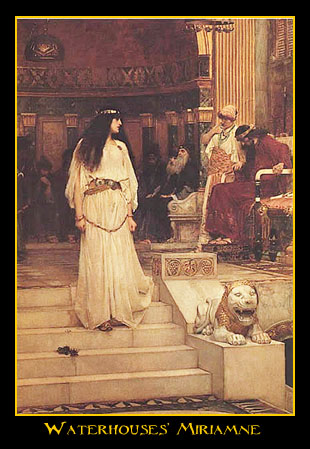
|
|
In
Helen of Troy, new elements include my own model, her jewelry,
crown and gown ornaments, The perspective is completely different
with the view of the sea going off into the distance, the bas relief
carvings, the ivy urn, the sphinx head, the flowers, the new floor, the
new dress, and the polished marble columns. When all is said and done,
only the stairs and the lion's lower body have not been changed beyond
all recognition. My Helen of Troy: the face that launched a thousand
ships; shows instead her seeing the approaching sea lights of her
husband Spartan King Menelaus' amphibious invasion fleet. ( From Homer's The
Iliad ) As a student of fine
art, copying is a great way to learn and create fine art, but as a
professional illustrator copyright laws make things very different...My
art is divided into two groups; personal work partially copying the old
masters and professional illustration applying these lessons to create
totally original works. I start more often with a specific
written request. This is the exact OPPOSITE approach to creating a
realistic painting copying something that's there. Research comes first.
|
|
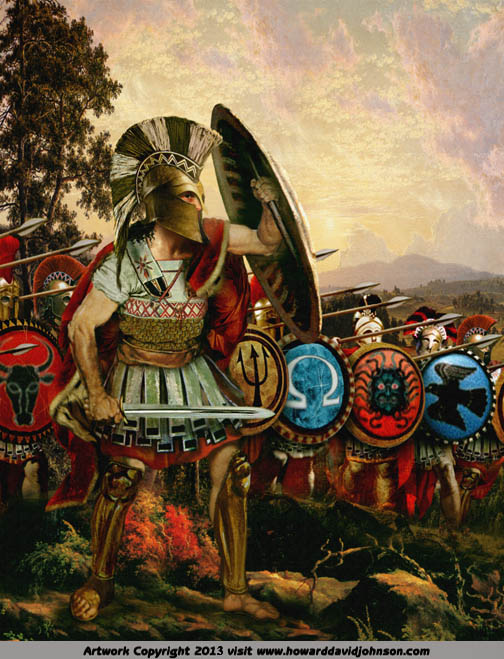
|
In the case of the Greek Heroes, ( left ) there were no realistic
paintings in the public domain to copy accurate Greek armour and
weapons in combat poses from. Mostly I found realistic paintings
of effeminate men, wearing nothing but a robe over the shoulder and the
wrong helmets. Finding history books at the library with the accurate
helmets, shield designs, weapons, and armour was essential to get an
accurate depiction of a Greek Hoplite.
All the library had
were stiff museum poses of anything. I hit the research jackpot with
some very simplistic flat line drawings of great authentic Greek shield
designs. All the elements must be found, gathered and assembled to
create the realistic painting the client wanted. Next comes the layout.
This is where the mathematics and geometric design enter the creative
process.
My wife Virginia took a
picture of me nearly twenty years ago on a carpentry project with the
heroic Jack Kirby -esque pose I was looking for mixed with the texture
and feel of a realistic Frank Frazetta or Norman Rockwell painting.
Naturally, in these cases I go to great lengths to make sure that my
work looks nothing whatsoever like it's various inspirations and
sources except in spirit. Of course, the characteristic old master's
painting feel to the background most of my realistic paintings had was
requested, and the picture was to have the drama of a Howard Pyle
painting. The final result resembles no painting ever done.
|
When
asked why I usually work from photos I like to re-tell Norman
Rockwell's story about having to paint a chicken: He set it up on a
stump in a barn and goes to painting. The chicken moves it's head. He
moves it back. The chicken jumps down. He puts it back. He goes to
paint. now the chicken decides to make a break for it... he chases it
down clucking and screaming and puts it back. Now it knows he's going
to have it for dinner and it goes completely berserk. The next day, he
came in and set the chicken back, snapped it's picture, and the photo
held nice and still."
~ Howard David Johnson
|
|
